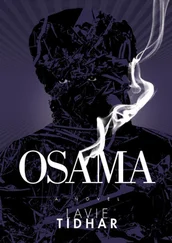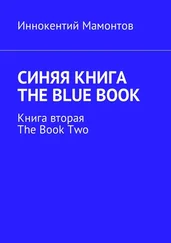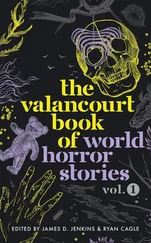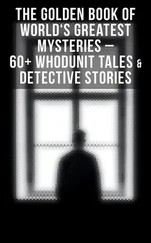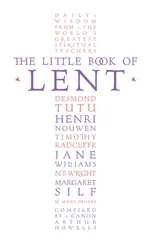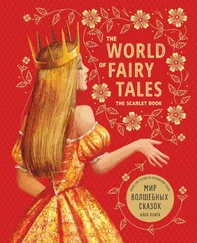“May I have a glass of water?” The raspy voice jolted me out of my thoughts.
I looked down at the old woman, and a wizened prune of a face looked back at me. My vision blurred and in a memory—as if it were my own—I saw her recover from her operation and fall in love, then marry. I was shocked. Her skin was yellow, her eyes full of grit—not someone who has something waiting for her. And still.
I poured her a glass of water. My hand shook.
“Don’t worry, love,” I said as I handed her the water. My father kept prophecies to himself, good and bad alike, although the latter was more likely to be spoken. I could afford to tell the good news. A small thing but it is within my power. “Two weeks and you will be like new. You will even dance at your wedding.”
She laughed. “Me? Oh heavens, no! Perhaps at yours, Judit.”
Definitely not at mine, I wanted to say, but my throat constricted. The face of the woman looked younger from laughing, and I would be sorry to see her age again. Plus… My breath stopped. The stupidity and futility of prophecies was suddenly plain, and I was lost amongst the waves of my thoughts.
“Just believe.” I put down the glass on the table and fled to the hallway.
I pressed my hands to my face. I knew that my father had wanted to talk about the future before he died. Was it good news or bad? I realised his message didn’t matter. What I see in the future doesn’t matter—for we are not unlike each other, the old lady and I. I know only a little bit more, and still I asked her to believe me. And what about me? Do I believe myself and what I have seen?
Or do I decide not to believe, and only believe what I wish for myself?
I clenched my teeth and hoped I had a little of my heart left still, for it has to feel. If it breaks in the process, it still has to feel.
I know the future. But I resist it.
I turned away from my past smelling of cinnamon, and while my clogs rapped loudly and quickly on the floor as I fled towards my room, my future melted at last and, salty and streaming, it overflowed.
The Secret Origin of Spin-Man
Andrew Drilon
Andrew Drilon is a Filipino comics creator, writer, illustrator and editor. He was a finalist for the 2008 Philippines’ Free Press Literary Award and is a recipient of the Philippine Graphic/Fiction Award. He is best known for his experimental webcomic, Kare-Kare Komiks , and is a regular cartoonist for The Philippine Star newspaper.
So you don’t know Spin-Man? Five-nine, lantern-jawed, starry-eyed Spin-Man? Spin-Man the Caped Cosmische, Spin-Man the Super-Cop, Spin-Man the Meta? Muscle-bound, brown-skinned, wrapped from beefy neck to toe in blue-and-gold spandex? Don’t worry about it. It’s okay. I don’t blame you. Spin-Man was one of those forgotten heroes of the Dark Age of Comics, just before the Image Era of big guns and chains and Spawn and bloodstained alleys. The champion of the Multiversal Continuum, balls-out science fantasy, following in the footsteps of Jim Starlin and Silver Surfer and Jack “The King” Kirby—Spin-Man was the last good Space Hero of the 90s and my number one favourite super-person. I’ll explain.
Okay, this may seem unrelated, but hear me out first because it’s important. When I was nine, my little brother and I went to the bargain bins of CATS as often as we could. After being picked up from school by our assiduous driver, Manong Eddie, who had been instructed to take no detours but had a soft spot for us boys; after an intermittent car ride, owing to the long stretch of traffic circling the vast perimeter of our private school; after a half-eaten merienda of adobo sandwich and Zesto Orange sent by our grandmother, God rest her soul; James and I would take it in turns (sometimes called out in unison) to remind our driver: “The main entrance of Virra Mall! We’ll only be thirty minutes! Mang Eddie, pleeeese!” Then the drive past Uni-Mart, around the corner facing McDonalds, as we busied ourselves counting the money in our pockets, at times almost two hundred pesos when pooled together, until finally my grandfather’s Altis slowed outside the mall’s main entrance, and we’d thrust the car doors open and hop out, promising Manong Edie that we’d be waiting there at exactly 4.45, no later, cross our excited little hearts.
Running in, ignoring the cinema schedule by the entrance where five or six people always stood deliberating what to watch, we would brush past strangers and other boys in school uniform, our trajectories plotted through the long air-conditioned corridors of the mall to avoid the various temptations that lined its capitalist halls (including the arcade) until we arrived at the shop of our hearts’ desires. Its windows, covered with painted posters of masked men and women, sheltered under a primary-coloured electric display that announced its most hallowed name: CATS. (Comics And Then Some.)
For a moment, we would ogle at the comics on the New Arrivals rack, committing their covers to memory and silently promising to acquire them when we had more money, after which we would go directly to the bargain bins; James starting on the leftmost end while I worked on the opposite, thumbing our way through rows and rows of titles as if in a marathon, flip flip flip, until we met at the middle, ready to sort through two piles of bargain comics. We would debate on 30-peso copies of X-Men, Avengers, Batman and numerous other titles, eliminating possible purchases by creating an agreed-upon hierarchy based first upon the title’s character, then artist, then writer. On rare occasions when we came to a disagreement, we would split our money down the middle and dictate our own purchases, though most of the time, our tastes were in complete accord.
By the end of our ritual, a stack of five or six carefully-considered comics were rung up at the till and wrapped in the customary CATS plastic bag, complete with a crude drawing of Wolverine printed under its wonderful, acronymic logo. Manong Eddie would be waiting for us outside, as patient as ever despite the extra quarter of an hour of waiting, resulting in a drive home that transpired in complete silence, as James and I lost ourselves to the outrageous adventures of these fictional men and women.
James and I agreed: the world’s greatest comic book artist was Jim Lee. I also liked Erik Larsen on Spider-Man; but his replacement, Mark Bagley, couldn’t draw Carnage with the appropriate menace, in my view. At an early age, I had become acutely aware of the people who worked on these comics, and in my wildest dreams I imagined myself drawing the X-Men under the pen of my favourite writer, Chris Claremont. I spent hours scrutinising these comics, copying my favourite poses, memorising the costumes and learning the vagaries of super-hero anatomy; the intricacies of foreshortening and the convolutions of idealised musculature wrapped in spandex. James struggled to keep up with me, but in the end resigned himself to colouring my illustrations in deference to my burgeoning drawing ability. I suppose our tastes were still far from refined, and if you had told us back then that Neil Gaiman was far superior to Scott Lobdell, we would have argued you out of the room. As a nine-year-old who could draw Superman with a modicum of accuracy, I had pronounced myself an expert on these multicoloured worlds, and James was more than willing to share in my obsession.
James, in turn, proclaimed himself to be the real-world counterpart of Daredevil. He would sit in the corner of our room facing a crumbling dartboard, one hand over his eyes, a trained dart in the other, declaring: “I will hit a bull’s eye using only my ears!” He rarely made the centre of the board, but when he did, it was a cause for celebration, and we’d jump around the room in a mock-battle between Daredevil and the vampire, Morbius. For a while, I myself was intent on developing a keen psychic talent à la Professor X, but that ambition fell by the wayside when I failed to read my classmate’s mind during a critical science exam. Fortunately, I had gained some popularity at school for my art skills, and in the end it was this ability that I cherished as my one and only superpower.
Читать дальше


